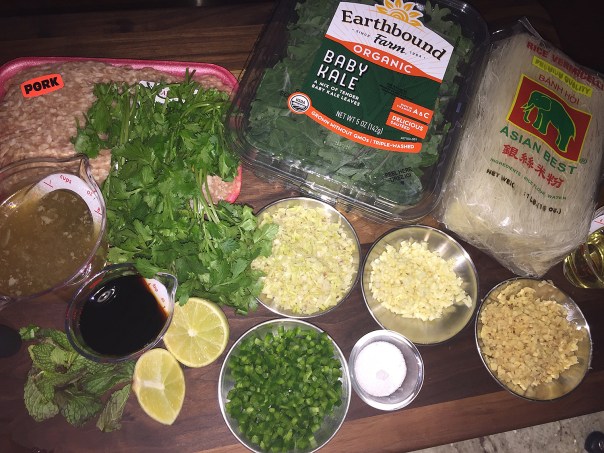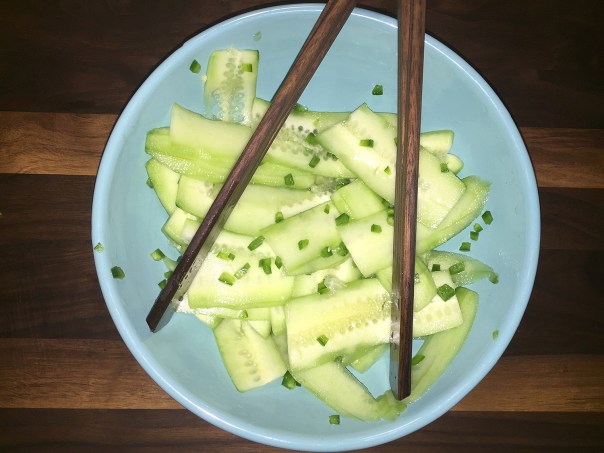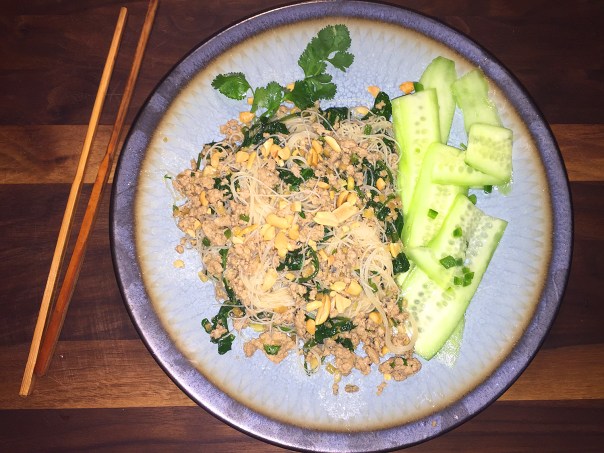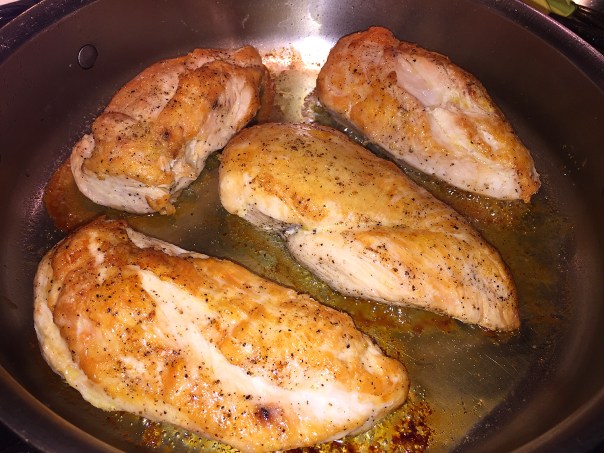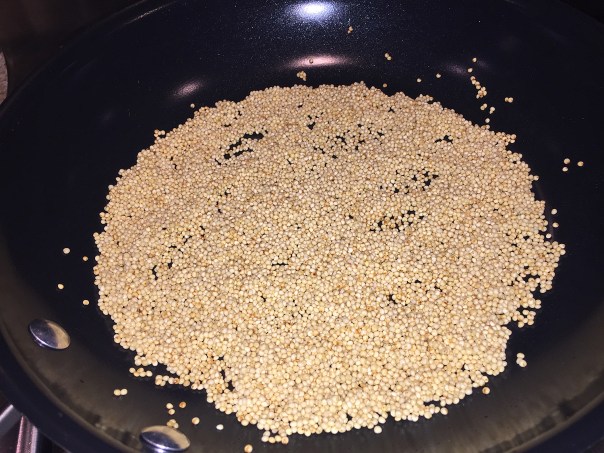Nearly 2 1/2 years ago we made Chicken and Sparerib Stew from one of our most admired Spanish chefs, Penelope Casas, and we were both a bit disappointed. What we realized—after the fact—was that the spareribs had freezer burn and thus produced the off-putting taste. (Of course, not sure why we didn’t realize that before cooking?!)
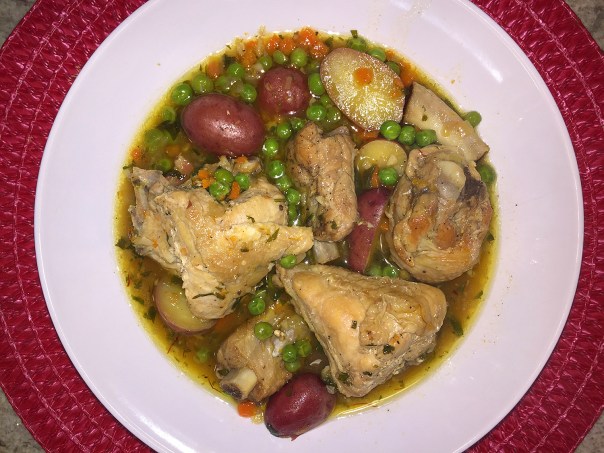
It took us this long to get the courage to try the recipe again, even though everything else we’ve ever cooked from her cookbook, La Cocina de Mamá, was more than memorable. Sometimes you just have to get back on the horse, you know what I mean?
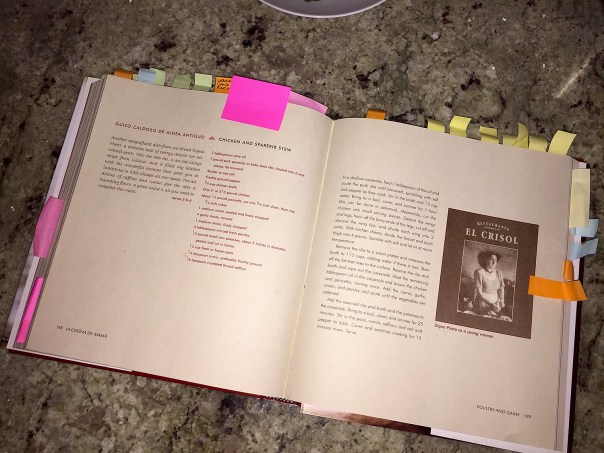 It’s obvious that we like Penelope’s recipes as half the cookbook is tagged!
It’s obvious that we like Penelope’s recipes as half the cookbook is tagged!
Penelope’s cookbook often directs you to cut up meat and poultry into many small pieces because the marrow is locked deep within the bones and can’t be extracted efficiently unless the bones are cracked or sawed in half. Russ also theorizes that they use to do so as a means to expand the meal to feed more people. Historically, Spain was a poor country and as Penelope collected her recipes from family, friends, acquaintances and centuries-old cookbooks, she was amazed how home cooks so brilliantly coaxed flavor from the simplest foods.

Russ begins hacking the whole chicken into pieces.

After setting aside the edible pieces, the unused chicken parts are added to our “body Bag” in the freezer for later use in making stock.
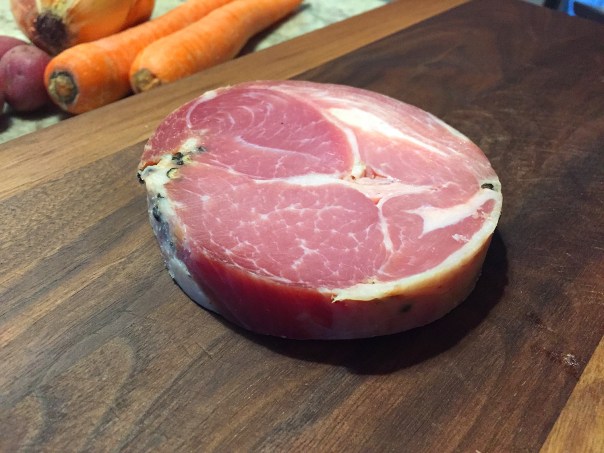 If possible, buy the 4-ounce piece of pancetta in one thick slab to cut down into 3/4″ chunks.
If possible, buy the 4-ounce piece of pancetta in one thick slab to cut down into 3/4″ chunks.
As before, the quota of carrots, peas and potatoes didn’t seem generous enough so we increased the amount of each by 50%. And the small additions of saffron and cumin give the Guiso Caldoso de Aldea Antiguo stew a haunting flavor.
Chicken and Sparerib Stew
Ingredients
- 2 Tbsp. olive oil
- 1 lb. pork spareribs or baby back ribs, hacked into 2″ pieces, fat trimmed
- Kosher or sea salt
- Freshly ground pepper
- 3/4 cup chicken broth
- One 3-4 lb. chicken
- 1/4 lb. pancetta, cut into 3/4″ slices, then into 3/4″ cubes
- 1 med. carrot, peeled and finely chopped
- 4 Tbsp. minced parsely
- 1/2-lb. small new potatoes, about 2″ in diameter, halved
- 1/2 cup fresh or frozen peas
- 1/4 tsp. cumin, preferably fresh ground
- 1/8 tsp. crumbled saffron threads
Directions
- In a shallow casserole, heat 1 tablespoon of the oil and sauté the pork ribs until browned, sprinkling with salt and pepper as they cook. Stir in the broth and 1/3 cup water. Bring to a boil, cover, and simmer for 1 hour (this can be done in advance.)

- Meanwhile cut the chicken into small serving pieces. Detach the wings and legs, and divide each wing into two parts.
- With kitchen shears, divide the breast and each thigh into four pieces. Sprinkle with salt and let sit at room temperature.
- Remove the ribs to a warm platter and measure the broth to 1 1/2 cups, adding water if there is less. Skim off the fat that rises to the surface. Reserve the ribs and broth and wipe out the casserole.
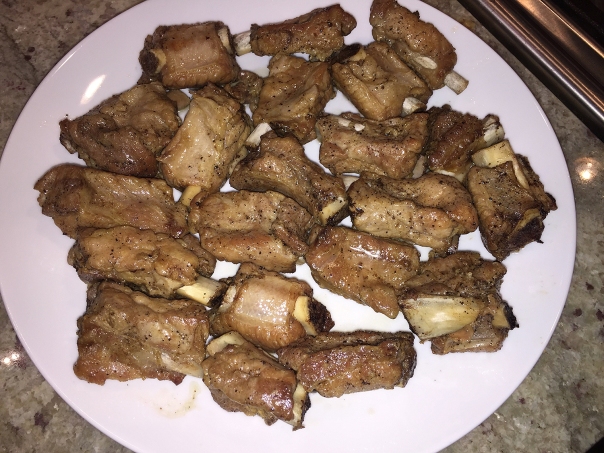
- Heat the remaining tablespoon of oil in the casserole and brown the chicken and pancetta, turning once.

- Add the carrot, garlic, onion, and parsley and sauté until the vegetables are softened.
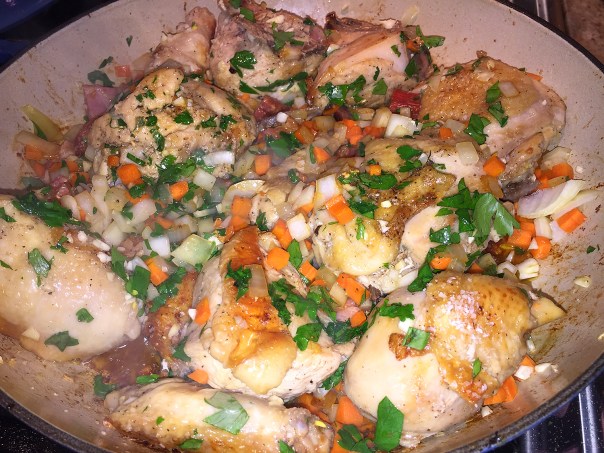
- Add the reserved ribs and broth and the potatoes to the casserole. Bring to a boil, cover, and simmer for 25 minutes.
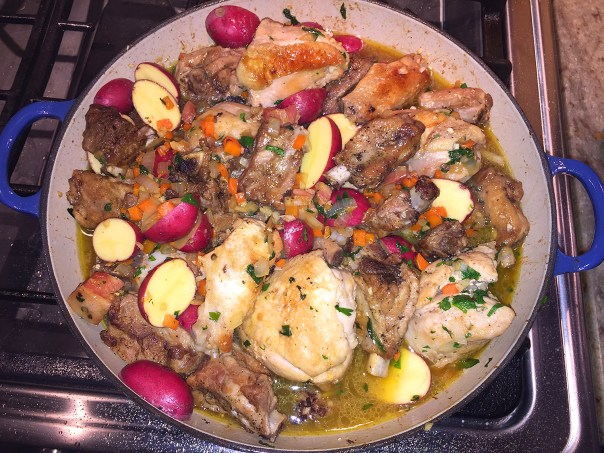
- Stir in the peas, cumin, saffron, and salt and pepper to taste. Cover and continue cooking for 15 minutes more. Serve.
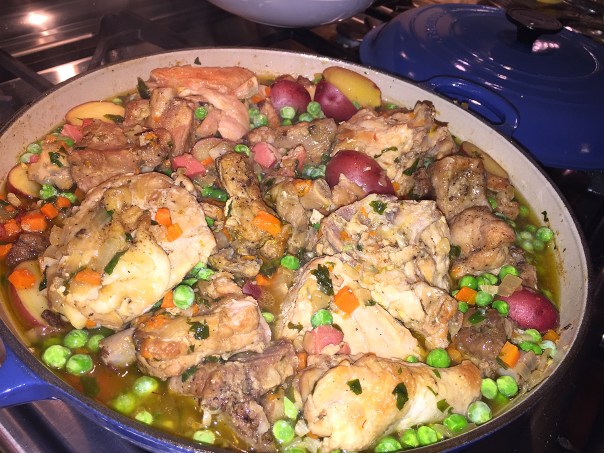




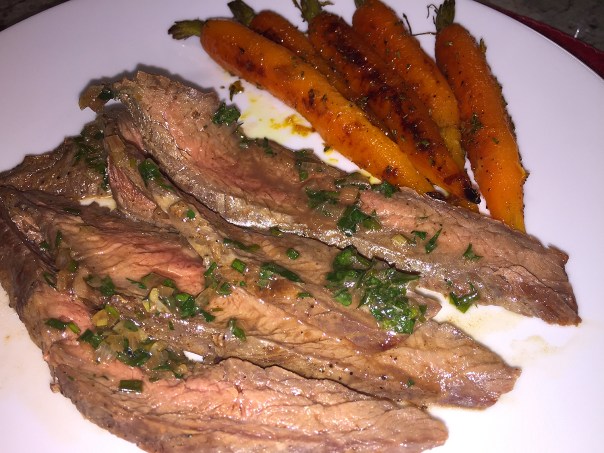

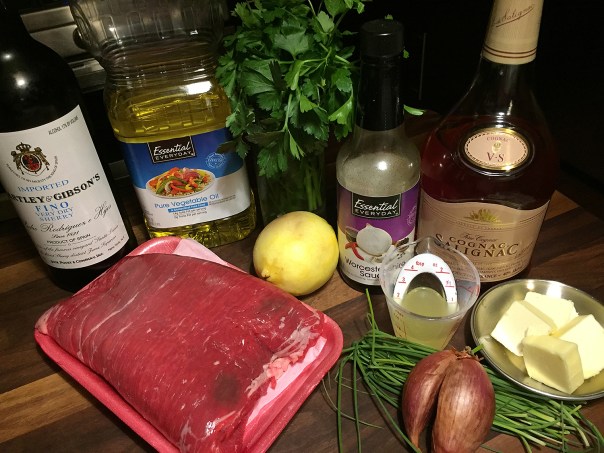


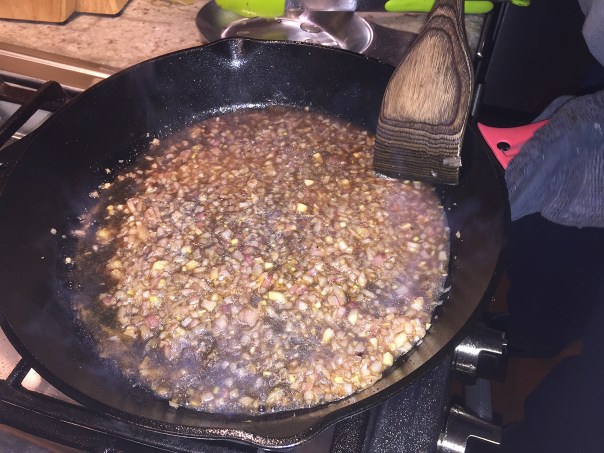







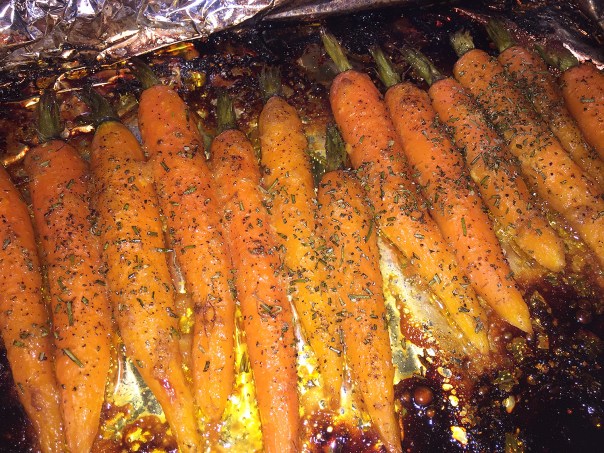



 FOR THE PEPPER SAUCE:
FOR THE PEPPER SAUCE: 











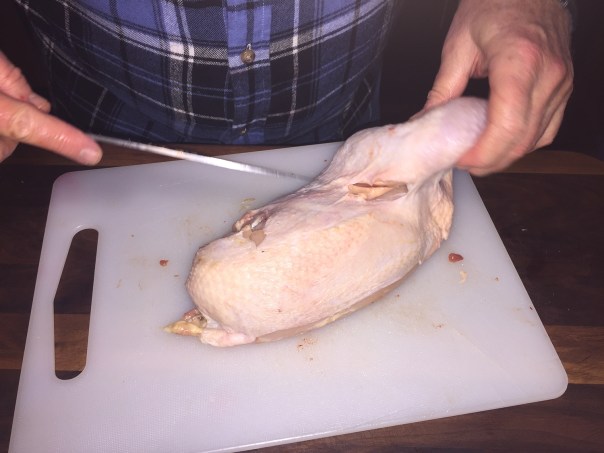

 Four hot cherry peppers are cut in half, stemmed and seeded.
Four hot cherry peppers are cut in half, stemmed and seeded.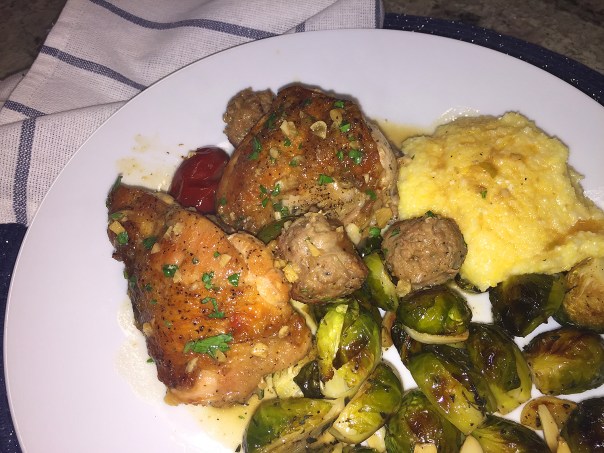

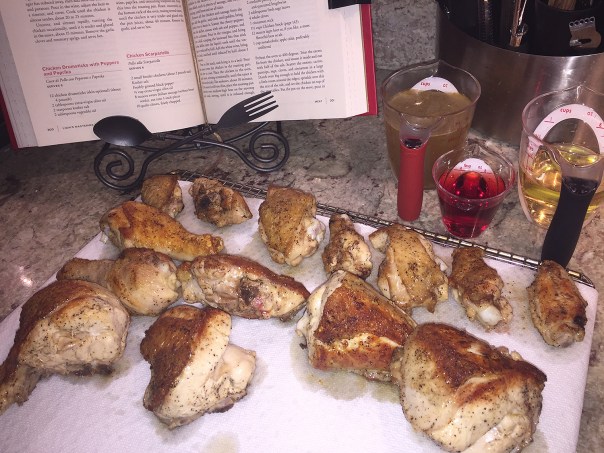
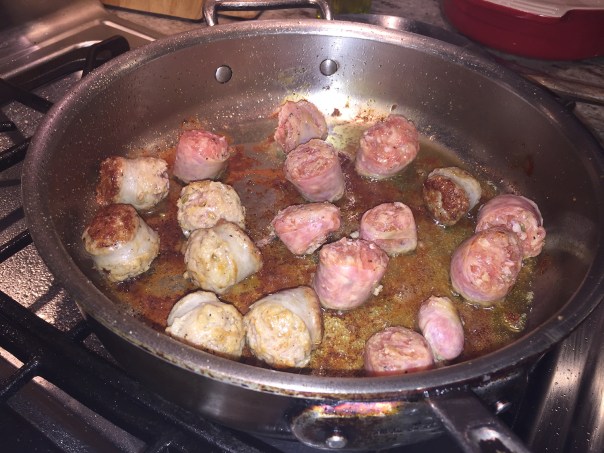



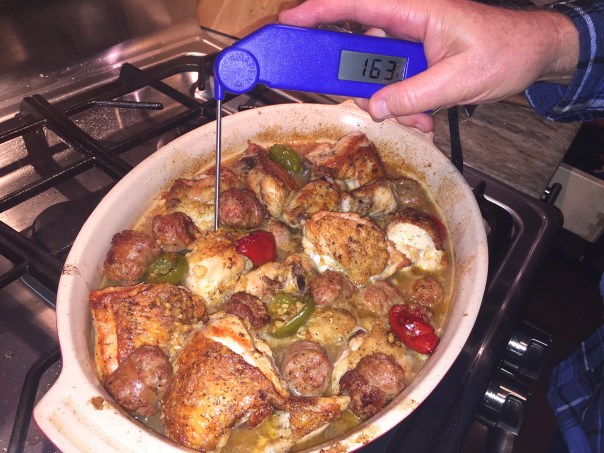
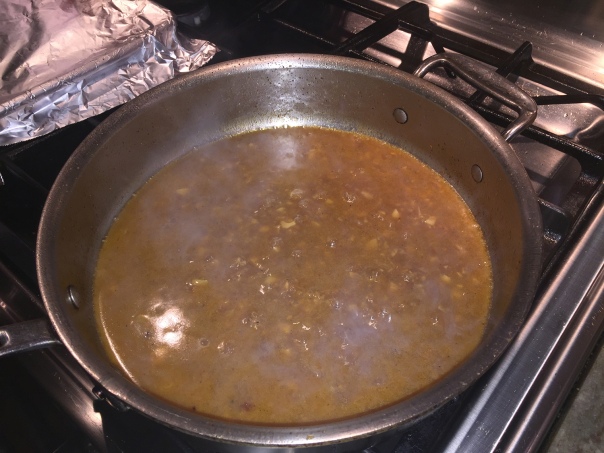




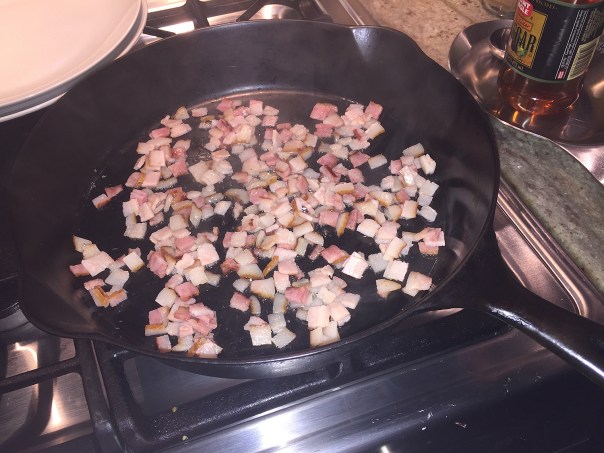
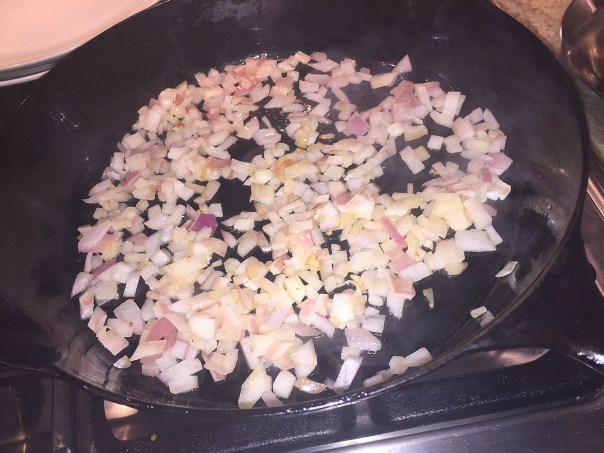

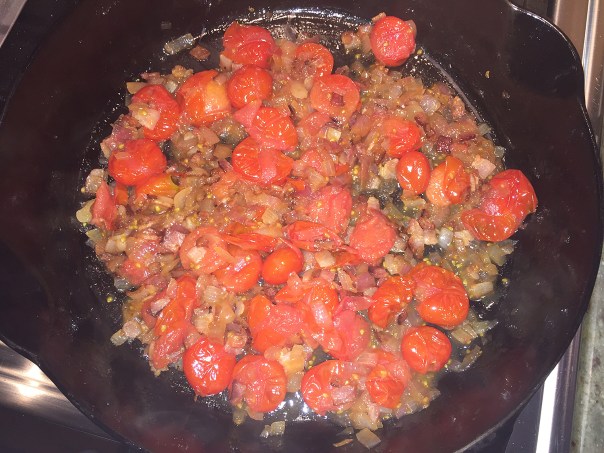

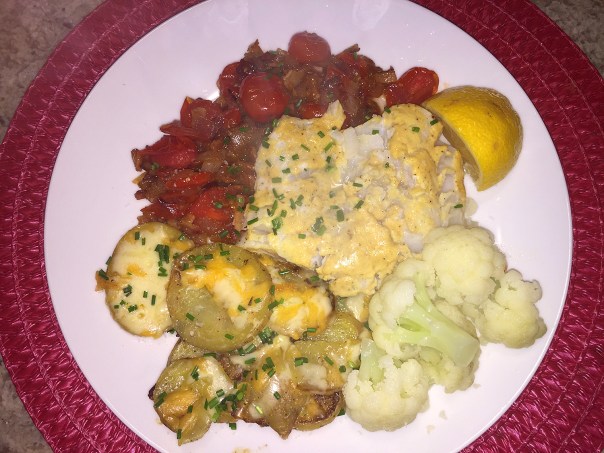
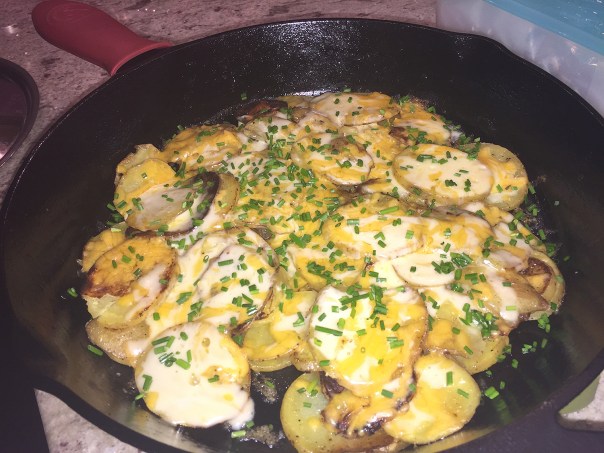
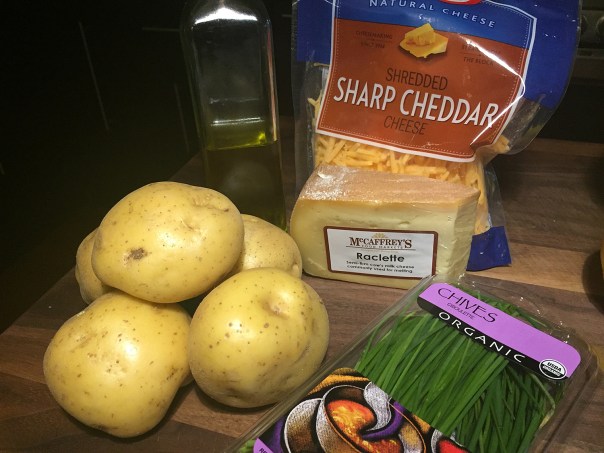








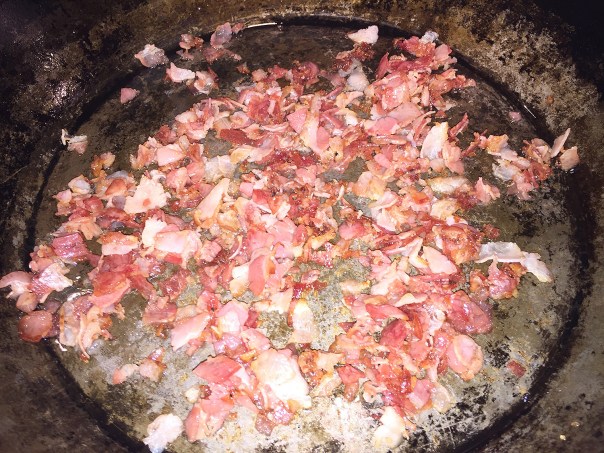
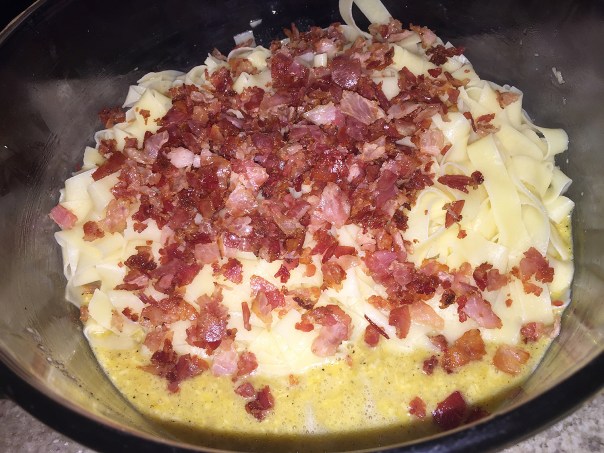






 To round out the meal we added rosemary roasted baby potatoes and a green salad.
To round out the meal we added rosemary roasted baby potatoes and a green salad.
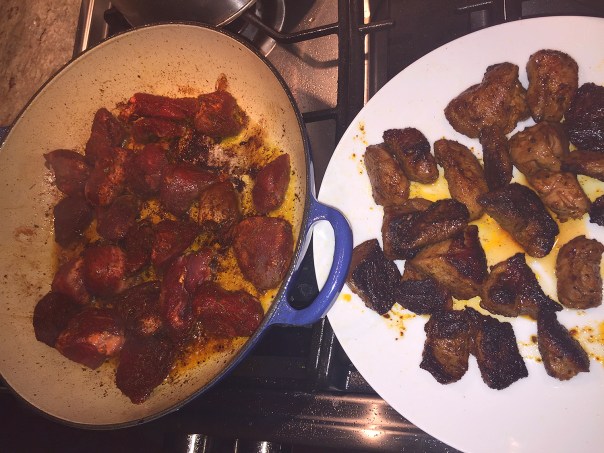
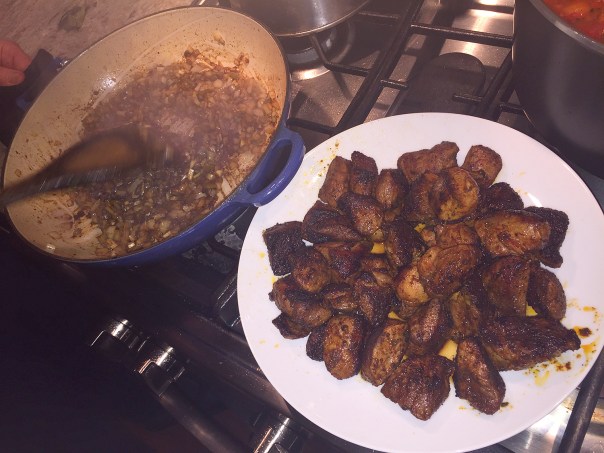





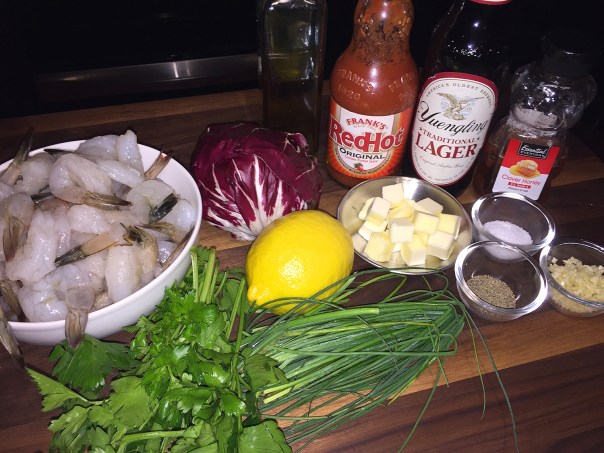
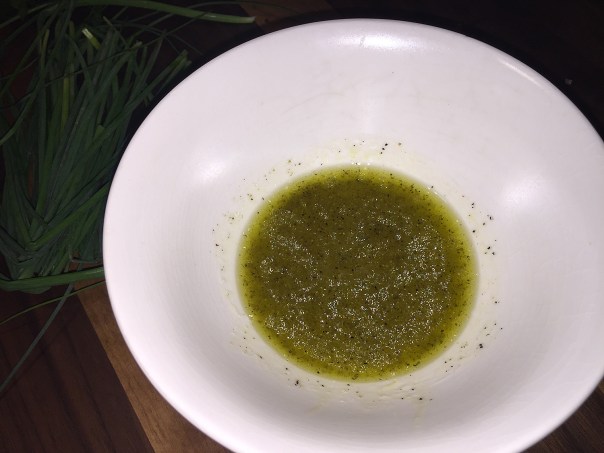

















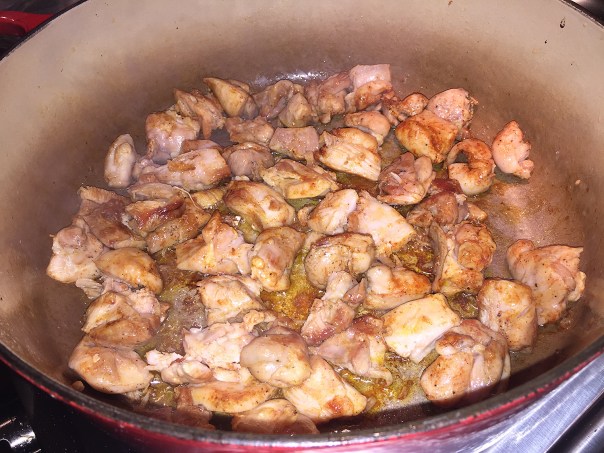

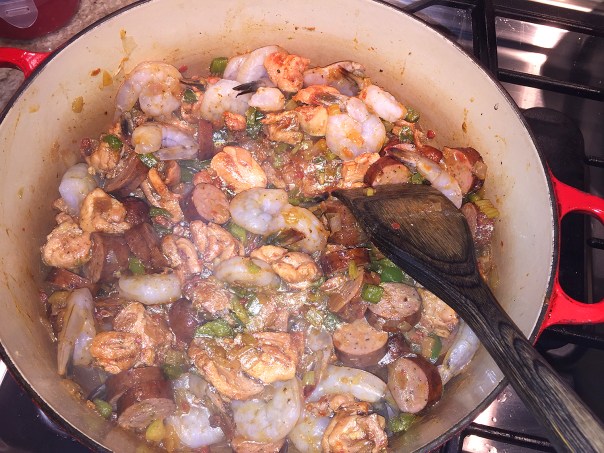



 From left, Paula, Lynn, Kim and Denise.
From left, Paula, Lynn, Kim and Denise.

 Our waiter adds the first slices of meat to the hot grill.
Our waiter adds the first slices of meat to the hot grill. The gang’s all here and ready to eat!
The gang’s all here and ready to eat!



